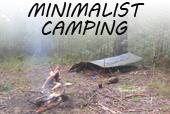Anyone who might someday get lost while backpacking, hunting, or canoeing should know the basic principles of how to build a wilderness survival shelter. There are various types, ranging from snow caves to poncho tents to modified rock-ledge shelters. They all have their point, but this article will cover just one: the lean-to.
One advantage of a lean-to is that it can be built virtually anyplace there are trees. Another is that it calls for no tools. Finally, it can be built with a assortment of materials.
The most design starts with a small tree or pole or stick which is lodged horizontally in the forks of two trees. This is the peak of the roof, and so it should be high enough so you can be snug inside the completed survival shelter, but also low enough in cool conditions so the place created can be warmed (at least in part) by your body heat. The length should allow for you to stretch out underneath.
Against this main “roof beam” you lean any twigs you can find. Weave a few horizontally for added strength. At the sides lean other little sticks to further enclose the space. Leave one side open, you can have a fire in front. Otherwise you can lean sticks on the other side of the beam as well, creating a kind of “a-frame” shelter (leave a hole to crawl inside).
To keep out wind and precipitation (the primary purposes of a survival shelter), you’ll need to “shingle” your roof. This can be done using flat evergreen boughs, bundles of grass, larger pieces of tree bark, or plastic and junk, depending on your settings. The important point here is to start by putting the materials against the bottom, where the roof slopes to meet the ground, and then add overlapping layers higher up.
A shelter like this can be made in an hour or so and keep out most rain, snow and wind. Unless you do plan to have a fire in front for warmth, keep the shelter small. In this way the heat from your body can keep the space heated to at least several degrees warmer than the outside air.
Article Source: ArticlesBase.com – How To Build A Wilderness Survival Shelter












